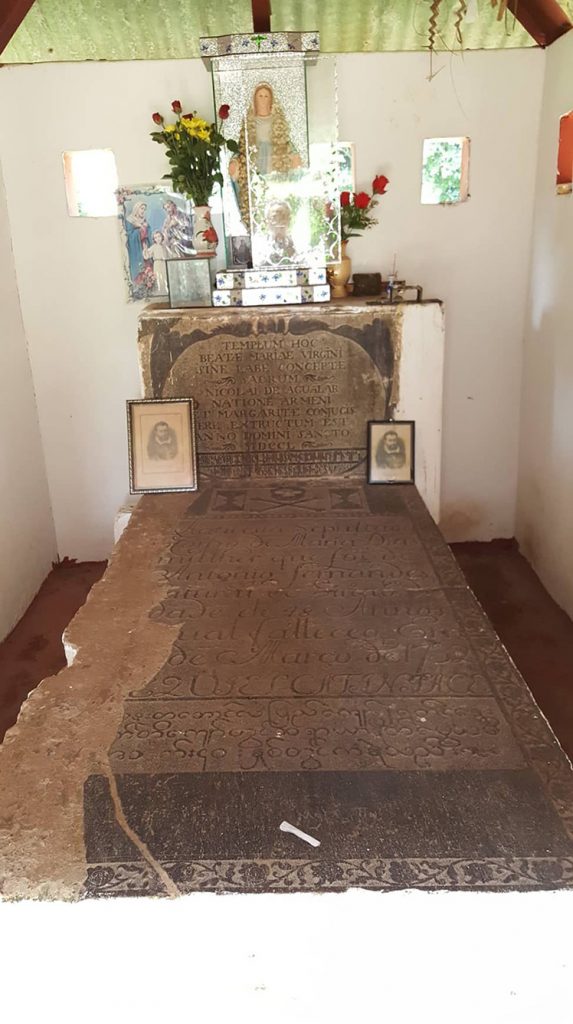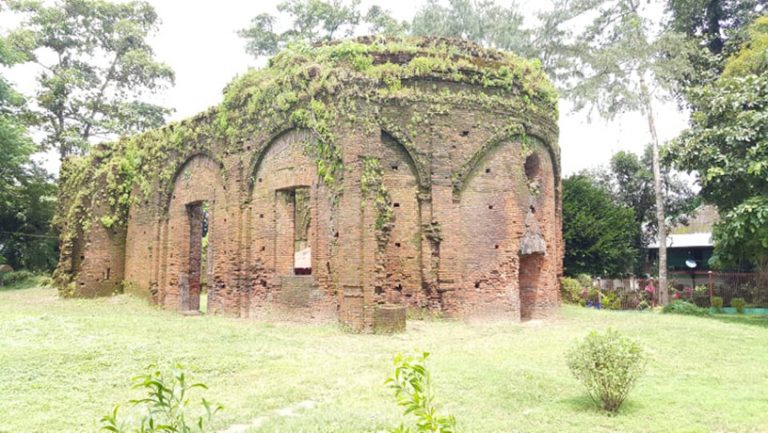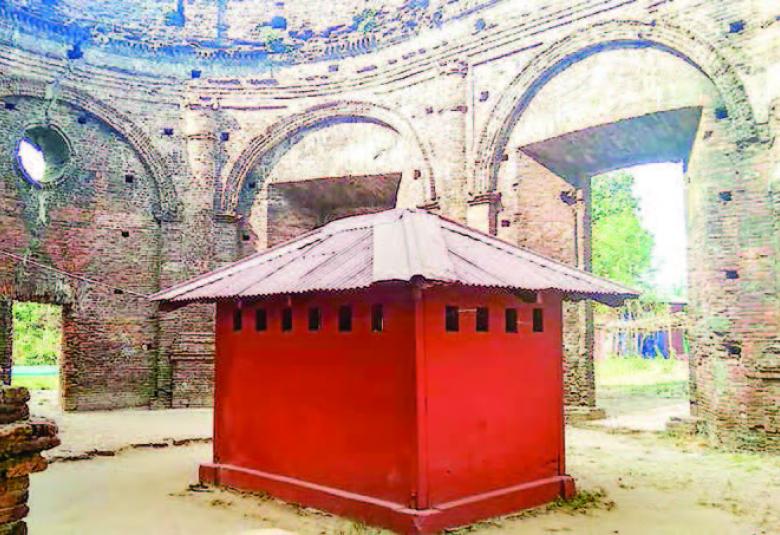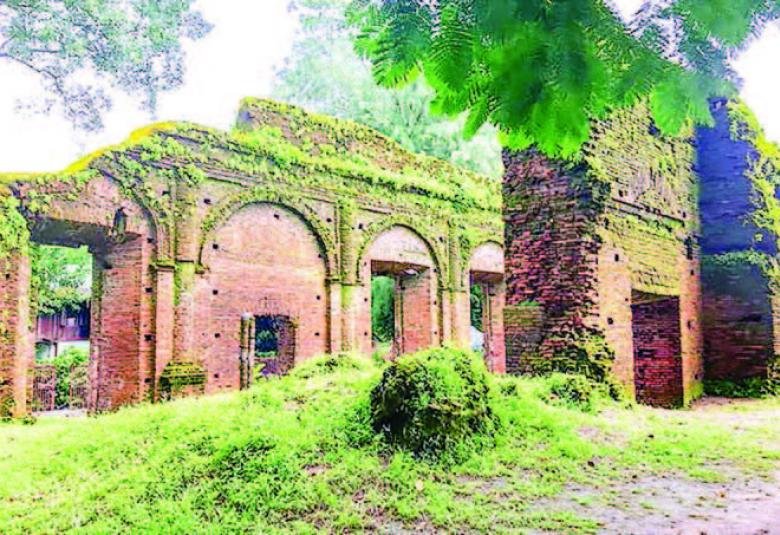May 30, 2020
By Maung Tha (Archaeology)
Among foreigners who interfered in Myanmar affairs in the history, Portuguese were those who earliest arrived in Myanmar. Of them, Nga Zin Kar aka Filipe de Brito who moved in Thanlyin region was the most notorious. Portuguese citizens together with Nga Zin Kar settled in Thanlyin, leaving their evidences.
Thanlyin in Myanmar history
The records of the Ministry of Home Affairs, Nga Thanlyin conquered the king of Pada region in 629 AD and established Thanlyin called Sakar Village as a city. He himself was titled as King Thanlyin. Mon ethnics called Thanlyin as Tharong. Portuguese name of Thanlyin was translated into English, calling Syriam.
Thanlyin fell under British colonial rule in 1852 after the Second Anglo-Myanmar War. The town was under control of Yangon District. Thanlyin was set as a town in 1907 and its municipal committee was formed in 1909. At that time, Thanlyin was home to 10,905 people in four wards. It was upgraded to Thanlyin District on 17 February 1912.
Currently, Thanlyin takes position between 16° 40’ and 59’ north latitude and between 96° 13’ and 25’ east longitude. The township with 13 miles in width from the east to the west and 24 miles in length from the south to the north is located on 143.56 square miles of land including 5.94 square miles of Thanlyin. The township is surrounded by Thongwa and Kayan townships in the east, Yangon River in the west, Kyauktan Township in the south and Bago River in the north.
Bago River flows along the seven miles length between Thanlyin Township and Yangon. The hillock of Kyaikkhauk Pagoda is the highest in Thanlyin Township which takes a position at 78.3 feet higher the sea level.
Thanlyin Township, formed with 17 wards and 57 villages from 28 village-tracts, gives residences to 248,216 number of population in March 2018, 95.32 per cent of whom are Bamar ethnic. Thanlyin Township possesses locations for Eastern Yangon University, Technological University, Myanmar Maritime University, Cooperative University, nine basic education high schools and five branches in addition nine middle schools and branches and 57 post-primary and primary schools. A general hospital (200-bed), a 16-bed station hospital and five rural health centres as well as private clinics are being operated to give healthcare services to the local people.
Kyaikkhauk Pagoda in Phayagon Village-tract is the most eminent among 146 pagodas and stupas in Thanlyin Township. There are five Christian religious buildings, 10 Islam religious buildings, 32 Hindu temples and two Chinese temples in the township. Among them, Kyaikkhauk Pagoda, Wungyi Padetharaza Tomb, Nat Shin Naung memorial tomb, Theindawgyi ordination hall in Kyaik-in Village, Portuguese Cathedral in Thanlyin and Mausoleum Five Saints (Panch Peer Dargah) are historic buildings in Thanlyin Township. The Department of Archaeology and National Museum maintains Kyaikkhauk Pagoda, Wungyi Padetharaza Tomb, Nat Shin Naung memorial tomb and ancient Portuguese Church.

Portuguese citizens in Myanmar history
In 16th century, Myanmar and Yodaya kings hired Portuguese gunners in their wars. But, Myanmar faced problems that Portuguese attempted to colonize parts of Myanmar.
Portuguese citizens arrived as merchants and mercenaries in Rakhine region from 1531 to 1638 AD. Portuguese officer Salvador Ribeire de Sousa, who arrived first in Rakhine, served as a major at the troop of Rakhine King Min Yazagyi in 1599 AD.
King Min Yazagyi recruited Portuguese mercenaries. But, increasing number of Portuguese made attempts of danger to the Rakhine king. de Brito from Thanlyin also defied the king. As such, King Min Yazagyi arranged to combat Portuguese as of 1607. The king gave opportunities to Dutch merchants in 1608 for building trade camps so as to seek help from them to combat Portuguese.
After King Bayintnaung had passed away, Rakhine King Min Yazagyi and Toungoo King Minye Thihathu joined hands in attacking Hanthawady of King Nanda. After conquering Hanthawady, when King Min Yazagyi arranged to return to Rakhine, Filipe de Brito from Portuguese troop requested the king to appoint him as the commander of the guard for customs office in Thanlyin.
In accord with the permission of the Toungoo King, King Min Yazagyi issued an order to assign Filipe de Brito to guard the customs office. When King Min Yazagyi returned to Rakhine, de Brito occupied the custom office and rebuilt it as a fortress. After occupying Thanlyin, he returned to Goa and handed over the area of Thanlyin to the Portuguese Governor and sought the recognition. While in Thanlyin, de Brito forcibly ordered the people to join the faith of Catholic. He ordered the locals not to pay homage and donate to Buddhist monks. Hence, some Buddhist monks fled from Thanlyin and some became laypersons again.
Nga Zin Kar ordered all domestic and international cargo ships to anchor in Thanlyin to levy taxes from them. As he controlled trade affairs, the regions in upper Myanmar faced shortages of goods including salt.
Toungoo King and Rakhine King attacked Thanlyin ruled by Nga Zin Kar in 1603 but their mission failed. Nga Zin Kar burgled enshrines of pagodas and cast bronze bells as cannons. In fact, it was reported that Nga Zin Kar made attempts to occupy the whole Myanmar in addition to Toungoo, Pyay and Inwa.
After occupying Thanlyin, Nga Zin Kar had organized over 3,000 followers and three warships in 1599. He urged Portuguese citizens to settle in Thanlyin and he himself married the daughter of Byinya Dala, the governor of Mottama City.
Nat Shin Naung from Toungoo associated with Nga Zin Kar. Hence, Toungoo faced great loss for them. Inwa King Anaukbeklun difficultly attacked Thanlyin in 1613 to combat Nga Zin Kar.
The King of Inwa investigated and killed both Nga Zin Kar and Nat Shin Naung in the presence of people in centre of Thanlyin. Later, Portuguese’s interference in Myanmar affairs came to an end. Then, Inwa King resettled Portuguese citizens from Thanlyin to the area near Shwebo.

Ancient Portuguese Church
Most of the people assumed the ancient Portuguese church as the tomb of Nga Zin Kar in the compound of No 1 Oil Refinery in Thanlyin. Construction of the building, 297 metres long and 16 metres wide, was funded by Armenian Nicolai de Agualar under the supervision of Italian Catholic priest Paolo Nerini of Inwa and Bago missionary team in 1749-1750 AD. It was a Catholic Cathedral for Europeans.
At present, the ruined church did not have the roof but damaged walls only. A team comprising 14 members led by Dr. Andrew Sneddon from the Culture and Ancient Heritage Department of the Queensland University in Australia conducted a 14-day excavation of research at the old church and environs in cooperation with the Department of Archaeology and National Museum in February 2017.
The excavation aimed to observe things whether there was another building in that place before 1700, do research whether there was any evidence written in Portuguese language related to development of trade in Thanlyin in 1600s, search evidences on bilateral relations between foreigners and locals, conduct research on lifestyle of locals in Thanlyin more than 250 years ago, and observe flow of commodities between Yangon and foreign merchants and archaeological facts on trade in these centuries.
They found pieces of pots, brick tiles and ceramic plates with floral designs. Dr. Andrew analyzed these objects were made in Europe or China or Viet Nam in 15th or 16th century. As they assumed a passage might be existed in the middle of the Cathedral, they found bricks in design of tiles in excavation.
Father Matthew from Insein Township said although some people assumed the tomb in the centre of the ruined Cathedral as that of Nga Zin Kar, the inscriptions on the tomb in Armenia, Latin and Portuguese languages showed it was not tomb of Nga Zin Kar.
The ancient Portuguese church built 270 years ago is a historic building that unveils part of Thanlyin region in the Myanmar history.
(Translated by Than Tun Aung)
References:
Facts and figures in Thanlyin Township
New Twinthin Great History (Maha Sithu U Tun Nyo)
The report on excavation of ancient Portuguese Church
Filipe de Brito (Wikipedia)





